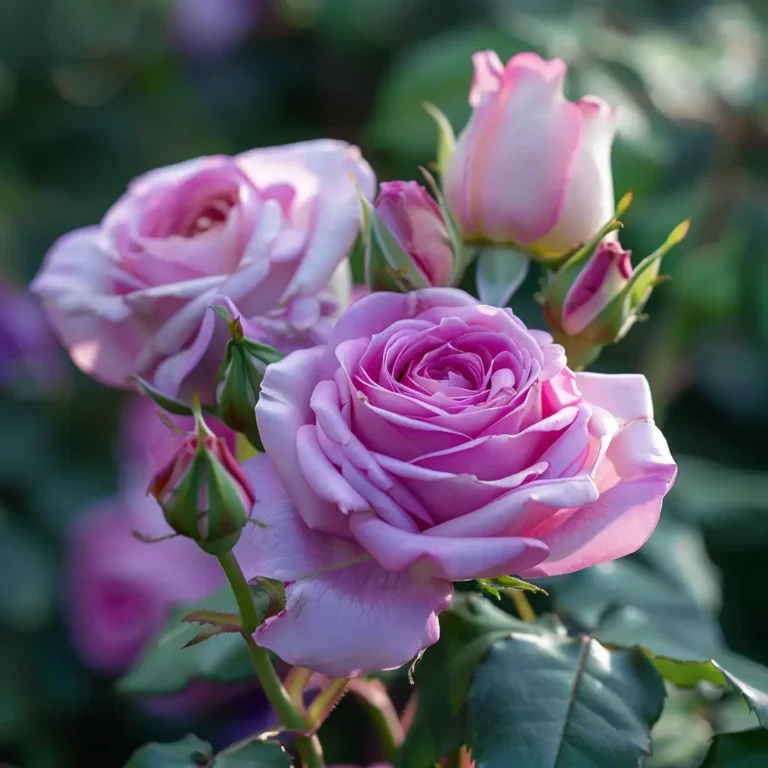Introduction
Lavender roses captivate with their unique and enchanting hue, standing out in gardens and floral arrangements. Known for their delicate beauty and subtle fragrance, these roses hold a special place in the hearts of gardeners and florists alike. This article delves into the history, varieties, cultivation, and symbolism of lavender roses, offering insights and tips for enthusiasts.
History and Origin of Lavender Roses
The origin of lavender roses is rooted in the hybridization of various rose species. Initially cultivated in the 19th century, these roses quickly gained popularity due to their rare and exquisite color. Historically, lavender roses symbolize enchantment and love at first sight, making them a favorite in romantic bouquets.
Types of Lavender Roses
Several varieties of lavender roses are cherished for their unique characteristics:
- Sterling Silver
- Known for its silvery-lavender petals and strong fragrance.
- Blue Moon
- A hybrid tea rose with large, deep lavender blooms.
- Lavender Dream
- A semi-double flower with a pleasant, fruity scent.
- Angel Face
- Features ruffled petals and a citrusy aroma.
These varieties highlight the diversity within the lavender rose category, each bringing its charm to gardens and floral displays.
Growing Lavender Roses
Cultivating lavender roses requires attention to detail. Here are essential tips for successful growth:
- Soil and Location
- Lavender roses thrive in well-drained, slightly acidic soil. Ensure they receive at least six hours of sunlight daily.
- Planting Techniques
- Plant in early spring or fall. Dig a hole twice the width of the root ball and as deep as the container.
- Watering and Fertilizing
- Water deeply once a week. Use a balanced fertilizer during the growing season for optimal health.
- Pruning and Maintenance
- Prune in late winter or early spring to remove dead or weak stems. Regularly check for pests and diseases.
Lavender Roses in Floral Arrangements
Lavender roses are a popular choice for floral arrangements due to their stunning color and symbolism. When arranging:
- Pair with white or pink flowers for a romantic look.
- Use contrasting greens to make the lavender hue pop.
- Consider the seasonality of the roses to ensure availability and freshness.
Symbolism and Meaning
The symbolism of lavender roses is rich and varied. Traditionally, they represent enchantment, mystery, and love at first sight. This makes them ideal for romantic gestures, anniversaries, and special occasions.
Common Pests and Diseases
Lavender roses, like all plants, can be susceptible to pests and diseases. Common issues include:
- Aphids
- Tiny insects that suck sap from new growth.
- Black Spot
- A fungal disease causing black spots on leaves.
- Powdery Mildew
- A white, powdery fungus affecting leaves and stems.
Regular monitoring and appropriate treatments can keep these issues at bay.
Tips for Prolonging Bloom
To ensure your lavender roses last as long as possible:
- Care Techniques
- Deadhead spent blooms to encourage new growth.
- Ensure adequate water, especially during dry spells.
- Storage and Handling
- For cut flowers, trim stems and place them in fresh water immediately. Keep them in a cool, shaded area.
FAQs
What is the significance of lavender roses in different cultures? Lavender roses symbolize enchantment and love at first sight, with variations in meaning across cultures.
How do you care for lavender roses in pots? Ensure proper drainage, use high-quality potting soil, and provide ample sunlight and water.
Can lavender roses grow in shade? While they prefer full sun, lavender roses can tolerate partial shade but may produce fewer blooms.
How often should you fertilize lavender roses? Fertilize in early spring and again after the first bloom cycle for best results.
Conclusion
Lavender roses are a captivating addition to any garden or floral arrangement. Their unique color, rich symbolism, and enchanting fragrance make them a favorite among rose enthusiasts. By following proper care techniques, you can enjoy the beauty and elegance of lavender roses year-round.

